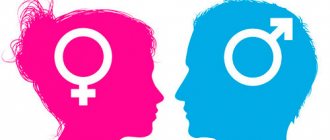Who developed the classification of temperaments?
From history we know who invented the temperaments, gave them names and definitions. This classification is far from new, and the ancient Greek physician and philosopher Hippocrates was the first to talk about differences in temperament.
He was interested in the fact that patients responded differently to treatment. Some recovered easily, while others were dogged by illness despite following all the recommendations. His fellow contemporaries explained this difference between the behavior of patients by climatic and natural factors, but Hippocrates suggested that brain activity and neurohumoral fluids of the body were to blame. Their ratio is individual and the predominance of one of them affects a person’s behavior and his resistance to external factors.
Hippocrates' theory remained a theory for some time, until it was developed by another ancient physician, a follower of Hippocrates.
We also know from ancient manuscripts who was the first to introduce the classification of personality by temperament. This is Claudius Galen, whose works formed the basis of modern medicine and his findings were mandatory for all medical students to study until the 19th century.
Sanguines
The word comes via French from the Italian sanguigna and originally from the Latin "sanguis" (red chalk). Each of the 4 types of Hippocratic classification is named after a substance, so do not be surprised at such a strange etymology.
The pigment used in sanguine sticks comes from red earth such as red ochre. Sanguine (chalk red) can also exist in several other colors such as orange, brown, brown, beige.
How to determine your personality type
Determining your personality type is quite simple. To do this, you can use different methods and tests. In addition, to save effort and time, you can take them online. The main goal of such questionnaires is to understand exactly how a person will react to a particular situation.
To obtain objective results, psychologists recommend giving quick and clear answers. You don’t need to think a lot about solving this or that issue, you need to act depending on the emotions that arise first
It is worth noting that there are no right or wrong questions in such tests. There is no good or bad answer here.
Melancholic people can only work in a calm and familiar environment
Story
Although a broad definition of temperament has been agreed upon, many temperament classification schemes have been developed, but there is still no consensus on them.
You may be interested in: Acceleration and velocity vectors. Acceleration and power. Directions of tangential and normal accelerations
Historically, the concept of “temperament” (originally “temperament” in Latin means “mixtures”). It was part of the theory of the four humors with their corresponding temperaments.
This historical concept has been explored by philosophers, psychologists, psychiatrists and psychophysiologists since the earliest times of psychological science, with theories proposed by Immanuel Kant, Hermann Lotze, Ivan Pavlov, Carl Jung, Gerardus Heymans and others. Their ideas were a development of the Hippocratic classification.
More recently, scientists seeking evidence for the biological basis of personality have further examined the relationship between temperament and neurotransmitter systems and character (defined in this context as aspects of personality development). However, biological correlations have proven difficult to confirm.
Melancholic people
Melancholy (from Greek: µέλαινα χολή melaina chole "gall bladders", also Latin lugere greed for sorrow, Latin morosus gloom of self-will or fastidious habit, and Old English wistfulness of intention or saturnina) from ancient or to modern medicine. Melancholy was one of the four temperaments corresponding to the four humours. In the 19th century, "melancholia" could be either physical or mental, and melancholic states were classified as such by their general cause rather than by their properties.
The defining feature of a melancholic attitude is perfectionism. They are idealists who want things to be a certain way, and they get upset when they don't.
They hold themselves and others to unrealistically high standards and become upset when those standards are not met. This leads them to be self-deprecating - because they don't live up to their own standards - and to criticize others - because those others don't measure up to their standards.
Their overall harsh demeanor comes from their internal struggle between an imperfect world and the desire for perfection.
Many melancholic people want to learn and understand, to know the details of every little thing, because to be ignorant is to deviate from perfection. They don't want to just accept things as they are. They are inquisitive and ask specific questions to reach a clearer understanding.
This leads many of them to excessive, neurotic disorders.
They are very stubborn because they try very hard to adhere to their carefully thought-out views and standards of perfection, and they do not easily stray from this path. They don't go with the flow.
additional literature
- Great Soviet Encyclopedia: In 30 volumes - M.: “Soviet Encyclopedia”, -.
- Chess., S. (1997). Temperament: Theory and Clinical Practice. Harvard Mental Health Letter, 14(5), 5-7.
- Davidson, D. A. (2005). Psychosocial Issues Affecting Social Participation. In J. Case-Smith (Ed.), Occupational Therapy for Children (pp. 449–480). St. Louis: Elsevier Mosby.
- Maziade, M. (1983). Le tempérament de l'enfant, les différences individuelles et les forces environnementales. Santé mentale au Québec, 8(2), 61-67.
- Olson, L. J. (1999). Psychosocial Frame of Reference. In P. Kramer & J. Hinojosa (Eds.), Frames of Reference for Pediatric Occupational Therapy (pp. 323–375). Philadelphia: Lippincott Williams & Wilkins.
- Zeanah, C. H., & Fox, N. A. (2004). Temperament and Attachment Disorders. Journal of Clinical Child & Adolescent Psychology, 33(1), 32-41.
Cholerics
People of this type are often leaders and masters of destiny. They strive to control situations, to be on top, to be the best.
This doesn't necessarily mean that they all want to reach the top of the corporate ladder or anything, or that they all want leadership roles, but in their day-to-day interactions with other people, they tend to be one-sided.
They use imperative, command language, framing things as orders rather than requests. Compare “bring me a drink” with “can I have a drink?” They'll probably use phrases like "sort it out", "get over yourself", "stop being such a wimp" and the like, or may start sentences with "look" or perhaps "look mate" or "listen" buddy" or things like that.
You might be interested:Anticline + syncline are folded mountains
They say things with confidence and confidence. Compare "X is so" with "maybe X is so, or something?"
They are firm and decisive in their approach to problems. They believe in “tough love” and try to “help” others by encouraging them to be their best selves.
They are more likely to tell someone they are trying to "help" that they are pathetic, expecting that person to say "no, I'm not pathetic, I'll show you!", as a choleric would actually respond to such thing.










